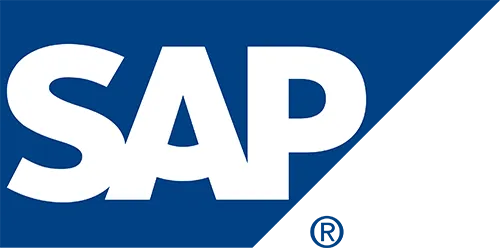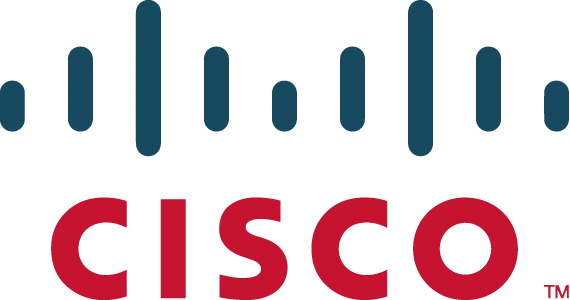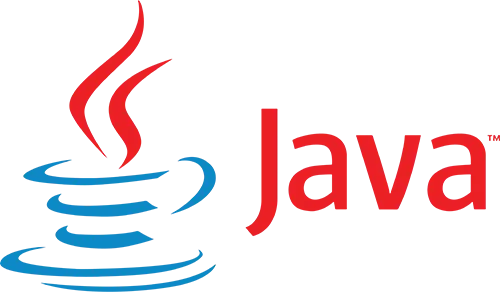Emerging Threats
Timely access to emerging threats allows your security team to respond confidently and efficiently, reducing mean time to remediation.
This list is continuously updated as new threats to the external attack surface are discovered. CyCognito users can find lists of at-risk assets in the CyCognito platform, as well as in the issue catalog once testing and validation is available.
CVE-2025-53770
- Source
- [email protected]
- Published
- 07/20/2025
- Updated
- 07/22/2025
CVSS Version 3.x
- Base Score / Severity
- 9.8 | CRITICAL
- Vector
- CVSS:3.1/AV:N/AC:L/PR:N/UI:N/S:U/C:H/I:H/A:H
Description
An unauthorized attacker can execute code over a network due to the deserialization of untrusted data in on-premises Microsoft SharePoint Server. Microsoft has confirmed that an exploit for CVE-2025-53770 is currently active in the wild. A comprehensive update is being developed and thoroughly tested to address this vulnerability. In the meantime, please ensure the mitigation steps outlined in the CVE documentation are implemented to stay protected against exploitation.
References
- [email protected]
- af854a3a-2127-422b-91ae-364da2661108
- https://arstechnica.com/security/2025/07/sharepoint-vulnerability-with-9-8-severity-rating-is-under-exploit-across-the-globe/
- https://github.com/kaizensecurity/CVE-2025-53770
- https://msrc.microsoft.com/blog/2025/07/customer-guidance-for-sharepoint-vulnerability-cve-2025-53770/
- https://news.ycombinator.com/item?id=44629710
- https://research.eye.security/sharepoint-under-siege/
- https://therecord.media/microsoft-sharepoint-zero-day-vulnerability-exploited-globally
- https://www.bleepingcomputer.com/news/microsoft/microsoft-sharepoint-zero-day-exploited-in-rce-attacks-no-patch-available/
- https://www.cisa.gov/news-events/alerts/2025/07/20/microsoft-releases-guidance-exploitation-sharepoint-vulnerability-cve-2025-53770
- https://www.darkreading.com/remote-workforce/microsoft-rushes-emergency-fix-exploited-sharepoint-toolshell-flaw
- https://www.forbes.com/sites/daveywinder/2025/07/20/microsoft-confirms-ongoing-mass-sharepoint-attack---no-patch-available/
- https://x.com/Shadowserver/status/1946900837306868163

CVE-2025-47889
- Source
- [email protected]
- Published
- 05/14/2025
- Updated
- 05/19/2025
CVSS Version 3.x
- Base Score / Severity
- 9.8 | CRITICAL
- Vector
- CVSS:3.1/AV:N/AC:L/PR:N/UI:N/S:U/C:H/I:H/A:H
Description
In Jenkins WSO2 Oauth Plugin 1.0 and earlier, authentication claims are accepted without validation by the "WSO2 Oauth" security realm, allowing unauthenticated attackers to log in to controllers using this security realm using any username and any password, including usernames that do not exist.
References

CVE-2025-47884
- Source
- [email protected]
- Published
- 05/14/2025
- Updated
- 05/16/2025
CVSS Version 3.x
- Base Score / Severity
- 9.1 | CRITICAL
- Vector
- CVSS:3.1/AV:N/AC:L/PR:L/UI:N/S:C/C:L/I:H/A:L
Description
In Jenkins OpenID Connect Provider Plugin 96.vee8ed882ec4d and earlier the generation of build ID Tokens uses potentially overridden values of environment variables, in conjunction with certain other plugins allowing attackers able to configure jobs to craft a build ID Token that impersonates a trusted job, potentially gaining unauthorized access to external services.
References

CVE-2025-4427
- Source
- 3c1d8aa1-5a33-4ea4-8992-aadd6440af75
- Published
- 05/13/2025
- Updated
- 05/21/2025
CVSS Version 3.x
- Base Score / Severity
- 5.3 | MEDIUM
- Vector
- CVSS:3.1/AV:N/AC:L/PR:N/UI:N/S:U/C:L/I:N/A:N
- Base Score / Severity
- 7.5 | HIGH
- Vector
- CVSS:3.1/AV:N/AC:L/PR:N/UI:N/S:U/C:H/I:N/A:N
Description
An authentication bypass in the API component of Ivanti Endpoint Manager Mobile 12.5.0.0 and prior allows attackers to access protected resources without proper credentials via the API.
References
- 3c1d8aa1-5a33-4ea4-8992-aadd6440af75

CVE-2025-4428
- Source
- 3c1d8aa1-5a33-4ea4-8992-aadd6440af75
- Published
- 05/13/2025
- Updated
- 05/21/2025
CVSS Version 3.x
- Base Score / Severity
- 7.2 | HIGH
- Vector
- CVSS:3.1/AV:N/AC:L/PR:H/UI:N/S:U/C:H/I:H/A:H
- Base Score / Severity
- 8.8 | HIGH
- Vector
- CVSS:3.1/AV:N/AC:L/PR:L/UI:N/S:U/C:H/I:H/A:H
Description
Remote Code Execution in API component in Ivanti Endpoint Manager Mobile 12.5.0.0 and prior on unspecified platforms allows authenticated attackers to execute arbitrary code via crafted API requests.
References
- 3c1d8aa1-5a33-4ea4-8992-aadd6440af75

CVE-2025-32756
- Source
- [email protected]
- Published
- 05/13/2025
- Updated
- 05/16/2025
CVSS Version 3.x
- Base Score / Severity
- 9.8 | CRITICAL
- Vector
- CVSS:3.1/AV:N/AC:L/PR:N/UI:N/S:U/C:H/I:H/A:H
Description
A stack-based buffer overflow vulnerability [CWE-121] in Fortinet FortiVoice versions 7.2.0, 7.0.0 through 7.0.6, 6.4.0 through 6.4.10, FortiRecorder versions 7.2.0 through 7.2.3, 7.0.0 through 7.0.5, 6.4.0 through 6.4.5, FortiMail versions 7.6.0 through 7.6.2, 7.4.0 through 7.4.4, 7.2.0 through 7.2.7, 7.0.0 through 7.0.8, FortiNDR versions 7.6.0, 7.4.0 through 7.4.7, 7.2.0 through 7.2.4, 7.0.0 through 7.0.6, FortiCamera versions 2.1.0 through 2.1.3, 2.0 all versions, 1.1 all versions, allows a remote unauthenticated attacker to execute arbitrary code or commands via sending HTTP requests with specially crafted hash cookie.
References

CVE-2025-42999
- Source
- [email protected]
- Published
- 05/13/2025
- Updated
- 05/16/2025
CVSS Version 3.x
- Base Score / Severity
- 9.1 | CRITICAL
- Vector
- CVSS:3.1/AV:N/AC:L/PR:H/UI:N/S:C/C:H/I:H/A:H
Description
SAP NetWeaver Visual Composer Metadata Uploader is vulnerable when a privileged user can upload untrusted or malicious content which, when deserialized, could potentially lead to a compromise of confidentiality, integrity, and availability of the host system.
References

CVE-2025-20188
- Source
- [email protected]
- Published
- 05/07/2025
- Updated
- 05/08/2025
CVSS Version 3.x
- Base Score / Severity
- 10 | CRITICAL
- Vector
- CVSS:3.1/AV:N/AC:L/PR:N/UI:N/S:C/C:H/I:H/A:H
Description
A vulnerability in the Out-of-Band Access Point (AP) Image Download feature of Cisco IOS XE Software for Wireless LAN Controllers (WLCs) could allow an unauthenticated, remote attacker to upload arbitrary files to an affected system. This vulnerability is due to the presence of a hard-coded JSON Web Token (JWT) on an affected system. An attacker could exploit this vulnerability by sending crafted HTTPS requests to the AP image download interface. A successful exploit could allow the attacker to upload files, perform path traversal, and execute arbitrary commands with root privileges. Note: For exploitation to be successful, the Out-of-Band AP Image Download feature must be enabled on the device. It is not enabled by default.
References

CVE-2025-31650
- Source
- [email protected]
- Published
- 04/28/2025
- Updated
- 05/06/2025
CVSS Version 3.x
- Base Score / Severity
- 7.5 | HIGH
- Vector
- CVSS:3.1/AV:N/AC:L/PR:N/UI:N/S:U/C:N/I:N/A:H
Description
Improper Input Validation vulnerability in Apache Tomcat. Incorrect error handling for some invalid HTTP priority headers resulted in incomplete clean-up of the failed request which created a memory leak. A large number of such requests could trigger an OutOfMemoryException resulting in a denial of service. This issue affects Apache Tomcat: from 9.0.76 through 9.0.102, from 10.1.10 through 10.1.39, from 11.0.0-M2 through 11.0.5. Users are recommended to upgrade to version 9.0.104, 10.1.40 or 11.0.6 which fix the issue.
References
- [email protected]
- af854a3a-2127-422b-91ae-364da2661108

CVE-2025-3928
- Source
- 9119a7d8-5eab-497f-8521-727c672e3725
- Published
- 04/25/2025
- Updated
- 05/28/2025
CVSS Version 3.x
- Base Score / Severity
- 8.8 | HIGH
- Vector
- CVSS:3.1/AV:N/AC:L/PR:L/UI:N/S:U/C:H/I:H/A:H
Description
Commvault Web Server has an unspecified vulnerability that can be exploited by a remote, authenticated attacker. According to the Commvault advisory: "Webservers can be compromised through bad actors creating and executing webshells." Fixed in version 11.36.46, 11.32.89, 11.28.141, and 11.20.217 for Windows and Linux platforms. This vulnerability was added to the CISA Known Exploited Vulnerabilities (KEV) Catalog on 2025-04-28.
References
- 9119a7d8-5eab-497f-8521-727c672e3725
- https://documentation.commvault.com/securityadvisories/CV_2025_03_1.html
- https://www.cisa.gov/known-exploited-vulnerabilities-catalog?search_api_fulltext=CVE-2025-3928
- https://www.cisa.gov/news-events/alerts/2025/05/22/advisory-update-cyber-threat-activity-targeting-commvaults-saas-cloud-application-metallic
- https://www.commvault.com/blogs/customer-security-update
- https://www.commvault.com/blogs/notice-security-advisory-update
- https://www.commvault.com/blogs/security-advisory-march-7-2025
- af854a3a-2127-422b-91ae-364da2661108

CVE-2025-31324
- Source
- [email protected]
- Published
- 04/24/2025
- Updated
- 04/26/2025
CVSS Version 3.x
- Base Score / Severity
- 10 | CRITICAL
- Vector
- CVSS:3.1/AV:N/AC:L/PR:N/UI:N/S:C/C:H/I:H/A:H
Description
SAP NetWeaver Visual Composer Metadata Uploader is not protected with a proper authorization, allowing unauthenticated agent to upload potentially malicious executable binaries that could severely harm the host system. This could significantly affect the confidentiality, integrity, and availability of the targeted system.
References

CVE-2025-22457
- Source
- 3c1d8aa1-5a33-4ea4-8992-aadd6440af75
- Published
- 04/03/2025
- Updated
- 04/07/2025
CVSS Version 3.x
- Base Score / Severity
- 9 | CRITICAL
- Vector
- CVSS:3.1/AV:N/AC:H/PR:N/UI:N/S:C/C:H/I:H/A:H
Description
A stack-based buffer overflow in Ivanti Connect Secure before version 22.7R2.6, Ivanti Policy Secure before version 22.7R1.4, and Ivanti ZTA Gateways before version 22.8R2.2 allows a remote unauthenticated attacker to achieve remote code execution.
References
- 3c1d8aa1-5a33-4ea4-8992-aadd6440af75

CVE-2025-2825
- Source
- [email protected]
- Published
- 03/26/2025
- Updated
- 04/02/2025
CVSS Version 3.x
- Base Score / Severity
- 9.8 | CRITICAL
- Vector
- CVSS:3.1/AV:N/AC:L/PR:N/UI:N/S:U/C:H/I:H/A:H
Description
CrushFTP versions 10.0.0 through 10.8.3 and 11.0.0 through 11.3.0 are affected by a vulnerability in the S3 authorization header processing that allows authentication bypass. Remote and unauthenticated HTTP requests to CrushFTP with known usernames can be used to impersonate a user and conduct actions on their behalf, including administrative actions and data retrieval.
References
- [email protected]
- https://attackerkb.com/topics/k0EgiL9Psz/cve-2025-2825/rapid7-analysis
- https://outpost24.com/blog/crushftp-auth-bypass-vulnerability/
- https://projectdiscovery.io/blog/crushftp-authentication-bypass
- https://raw.githubusercontent.com/projectdiscovery/nuclei-templates/main/http/cves/2025/CVE-2025-2825.yaml
- https://www.crushftp.com/crush11wiki/Wiki.jsp?page=Update
- https://www.rapid7.com/blog/post/2025/03/25/etr-notable-vulnerabilities-in-next-js-cve-2025-29927/
- https://www.runzero.com/blog/crushftp/
- af854a3a-2127-422b-91ae-364da2661108

CVE-2025-24514
- Source
- [email protected]
- Published
- 03/25/2025
- Updated
- 03/27/2025
CVSS Version 3.x
- Base Score / Severity
- 8.8 | HIGH
- Vector
- CVSS:3.1/AV:N/AC:L/PR:L/UI:N/S:U/C:H/I:H/A:H
Description
A security issue was discovered in ingress-nginx https://github.com/kubernetes/ingress-nginx where the `auth-url` Ingress annotation can be used to inject configuration into nginx. This can lead to arbitrary code execution in the context of the ingress-nginx controller, and disclosure of Secrets accessible to the controller. (Note that in the default installation, the controller can access all Secrets cluster-wide.)
References

CVE-2025-1974
- Source
- [email protected]
- Published
- 03/25/2025
- Updated
- 03/27/2025
CVSS Version 3.x
- Base Score / Severity
- 9.8 | CRITICAL
- Vector
- CVSS:3.1/AV:N/AC:L/PR:N/UI:N/S:U/C:H/I:H/A:H
Description
A security issue was discovered in Kubernetes where under certain conditions, an unauthenticated attacker with access to the pod network can achieve arbitrary code execution in the context of the ingress-nginx controller. This can lead to disclosure of Secrets accessible to the controller. (Note that in the default installation, the controller can access all Secrets cluster-wide.)
References

CVE-2025-1098
- Source
- [email protected]
- Published
- 03/25/2025
- Updated
- 03/27/2025
CVSS Version 3.x
- Base Score / Severity
- 8.8 | HIGH
- Vector
- CVSS:3.1/AV:N/AC:L/PR:L/UI:N/S:U/C:H/I:H/A:H
Description
A security issue was discovered in ingress-nginx https://github.com/kubernetes/ingress-nginx where the `mirror-target` and `mirror-host` Ingress annotations can be used to inject arbitrary configuration into nginx. This can lead to arbitrary code execution in the context of the ingress-nginx controller, and disclosure of Secrets accessible to the controller. (Note that in the default installation, the controller can access all Secrets cluster-wide.)
References

CVE-2025-1097
- Source
- [email protected]
- Published
- 03/25/2025
- Updated
- 03/27/2025
CVSS Version 3.x
- Base Score / Severity
- 8.8 | HIGH
- Vector
- CVSS:3.1/AV:N/AC:L/PR:L/UI:N/S:U/C:H/I:H/A:H
Description
A security issue was discovered in ingress-nginx https://github.com/kubernetes/ingress-nginx where the `auth-tls-match-cn` Ingress annotation can be used to inject configuration into nginx. This can lead to arbitrary code execution in the context of the ingress-nginx controller, and disclosure of Secrets accessible to the controller. (Note that in the default installation, the controller can access all Secrets cluster-wide.)
References

CVE-2025-29927
- Source
- [email protected]
- Published
- 03/21/2025
- Updated
- 03/23/2025
CVSS Version 3.x
- Base Score / Severity
- 9.1 | CRITICAL
- Vector
- CVSS:3.1/AV:N/AC:L/PR:N/UI:N/S:U/C:H/I:H/A:N
Description
Next.js is a React framework for building full-stack web applications. Prior to 14.2.25 and 15.2.3, it is possible to bypass authorization checks within a Next.js application, if the authorization check occurs in middleware. If patching to a safe version is infeasible, it is recommend that you prevent external user requests which contain the x-middleware-subrequest header from reaching your Next.js application. This vulnerability is fixed in 14.2.25 and 15.2.3.
References

CVE-2025-23120
- Source
- [email protected]
- Published
- 03/20/2025
- Updated
- 03/20/2025
CVSS Version 3.x
- Base Score / Severity
- 9.9 | CRITICAL
- Vector
- CVSS:3.0/AV:N/AC:L/PR:L/UI:N/S:C/C:H/I:H/A:H
Description
A vulnerability allowing remote code execution (RCE) for domain users.
References

CVE-2025-29775
- Source
- [email protected]
- Published
- 03/14/2025
- Updated
- 03/15/2025
CVSS Version 3.x
- Base Score / Severity
- 9.3 | CRITICAL
- Vector
- CVSS:4.0/AV:N/AC:L/AT:N/PR:N/UI:N/VC:H/VI:H/VA:H/SC:N/SI:N/SA:N/E:X/CR:X/IR:X/AR:X/MAV:X/MAC:X/MAT:X/MPR:X/MUI:X/MVC:X/MVI:X/MVA:X/MSC:X/MSI:X/MSA:X/S:X/AU:X/R:X/V:X/RE:X/U:X
Description
xml-crypto is an XML digital signature and encryption library for Node.js. An attacker may be able to exploit a vulnerability in versions prior to 6.0.1, 3.2.1, and 2.1.6 to bypass authentication or authorization mechanisms in systems that rely on xml-crypto for verifying signed XML documents. The vulnerability allows an attacker to modify a valid signed XML message in a way that still passes signature verification checks. For example, it could be used to alter critical identity or access control attributes, enabling an attacker to escalate privileges or impersonate another user. Users of versions 6.0.0 and prior should upgrade to version 6.0.1 to receive a fix. Those who are still using v2.x or v3.x should upgrade to patched versions 2.1.6 or 3.2.1, respectively.
References
- [email protected]
- https://github.com/node-saml/xml-crypto/commit/28f92218ecbb8dcbd238afa4efbbd50302aa9aed
- https://github.com/node-saml/xml-crypto/commit/886dc63a8b4bb5ae1db9f41c7854b171eb83aa98
- https://github.com/node-saml/xml-crypto/commit/8ac6118ee7978b46aa56b82cbcaa5fca58c93a07
- https://github.com/node-saml/xml-crypto/releases/tag/v2.1.6
- https://github.com/node-saml/xml-crypto/releases/tag/v3.2.1
- https://github.com/node-saml/xml-crypto/releases/tag/v6.0.1
- https://github.com/node-saml/xml-crypto/security/advisories/GHSA-x3m8-899r-f7c3
- af854a3a-2127-422b-91ae-364da2661108

CVE-2025-29774
- Source
- [email protected]
- Published
- 03/14/2025
- Updated
- 03/15/2025
CVSS Version 3.x
- Base Score / Severity
- 9.3 | CRITICAL
- Vector
- CVSS:4.0/AV:N/AC:L/AT:N/PR:N/UI:N/VC:H/VI:H/VA:H/SC:N/SI:N/SA:N/E:X/CR:X/IR:X/AR:X/MAV:X/MAC:X/MAT:X/MPR:X/MUI:X/MVC:X/MVI:X/MVA:X/MSC:X/MSI:X/MSA:X/S:X/AU:X/R:X/V:X/RE:X/U:X
Description
xml-crypto is an XML digital signature and encryption library for Node.js. An attacker may be able to exploit a vulnerability in versions prior to 6.0.1, 3.2.1, and 2.1.6 to bypass authentication or authorization mechanisms in systems that rely on xml-crypto for verifying signed XML documents. The vulnerability allows an attacker to modify a valid signed XML message in a way that still passes signature verification checks. For example, it could be used to alter critical identity or access control attributes, enabling an attacker with a valid account to escalate privileges or impersonate another user. Users of versions 6.0.0 and prior should upgrade to version 6.0.1 to receive a fix. Those who are still using v2.x or v3.x should upgrade to patched versions 2.1.6 or 3.2.1, respectively.
References
- [email protected]
- https://github.com/node-saml/xml-crypto/commit/28f92218ecbb8dcbd238afa4efbbd50302aa9aed
- https://github.com/node-saml/xml-crypto/commit/886dc63a8b4bb5ae1db9f41c7854b171eb83aa98
- https://github.com/node-saml/xml-crypto/commit/8ac6118ee7978b46aa56b82cbcaa5fca58c93a07
- https://github.com/node-saml/xml-crypto/releases/tag/v2.1.6
- https://github.com/node-saml/xml-crypto/releases/tag/v3.2.1
- https://github.com/node-saml/xml-crypto/releases/tag/v6.0.1
- https://github.com/node-saml/xml-crypto/security/advisories/GHSA-9p8x-f768-wp2g
- af854a3a-2127-422b-91ae-364da2661108

CVE-2025-25291
- Source
- [email protected]
- Published
- 03/12/2025
- Updated
- 03/20/2025
CVSS Version 3.x
- Base Score / Severity
- 9.3 | CRITICAL
- Vector
- CVSS:4.0/AV:N/AC:L/AT:N/PR:N/UI:N/VC:H/VI:H/VA:N/SC:N/SI:N/SA:N/E:X/CR:X/IR:X/AR:X/MAV:X/MAC:X/MAT:X/MPR:X/MUI:X/MVC:X/MVI:X/MVA:X/MSC:X/MSI:X/MSA:X/S:X/AU:X/R:X/V:X/RE:X/U:X
Description
ruby-saml provides security assertion markup language (SAML) single sign-on (SSO) for Ruby. An authentication bypass vulnerability was found in ruby-saml prior to versions 1.12.4 and 1.18.0 due to a parser differential. ReXML and Nokogiri parse XML differently; the parsers can generate entirely different document structures from the same XML input. That allows an attacker to be able to execute a Signature Wrapping attack. This issue may lead to authentication bypass. Versions 1.12.4 and 1.18.0 fix the issue.
References
- [email protected]
- https://about.gitlab.com/releases/2025/03/12/patch-release-gitlab-17-9-2-released
- https://github.blog/security/sign-in-as-anyone-bypassing-saml-sso-authentication-with-parser-differentials
- https://github.com/SAML-Toolkits/ruby-saml/commit/e76c5b36bac40aedbf1ba7ffaaf495be63328cd9
- https://github.com/SAML-Toolkits/ruby-saml/commit/e9c1cdbd0f9afa467b585de279db0cbd0fb8ae97
- https://github.com/SAML-Toolkits/ruby-saml/releases/tag/v1.12.4
- https://github.com/SAML-Toolkits/ruby-saml/releases/tag/v1.18.0
- https://github.com/SAML-Toolkits/ruby-saml/security/advisories/GHSA-4vc4-m8qh-g8jm
- https://github.com/omniauth/omniauth-saml/security/advisories/GHSA-hw46-3hmr-x9xv
- https://portswigger.net/research/saml-roulette-the-hacker-always-wins
- af854a3a-2127-422b-91ae-364da2661108

CVE-2025-25292
- Source
- [email protected]
- Published
- 03/12/2025
- Updated
- 03/20/2025
CVSS Version 3.x
- Base Score / Severity
- 9.3 | CRITICAL
- Vector
- CVSS:4.0/AV:N/AC:L/AT:N/PR:N/UI:N/VC:H/VI:H/VA:N/SC:N/SI:N/SA:N/E:X/CR:X/IR:X/AR:X/MAV:X/MAC:X/MAT:X/MPR:X/MUI:X/MVC:X/MVI:X/MVA:X/MSC:X/MSI:X/MSA:X/S:X/AU:X/R:X/V:X/RE:X/U:X
Description
ruby-saml provides security assertion markup language (SAML) single sign-on (SSO) for Ruby. An authentication bypass vulnerability was found in ruby-saml prior to versions 1.12.4 and 1.18.0 due to a parser differential. ReXML and Nokogiri parse XML differently, the parsers can generate entirely different document structures from the same XML input. That allows an attacker to be able to execute a Signature Wrapping attack. This issue may lead to authentication bypass. Versions 1.12.4 and 1.18.0 contain a patch for the issue.
References
- [email protected]
- https://about.gitlab.com/releases/2025/03/12/patch-release-gitlab-17-9-2-released
- https://github.blog/security/sign-in-as-anyone-bypassing-saml-sso-authentication-with-parser-differentials
- https://github.com/SAML-Toolkits/ruby-saml/commit/e76c5b36bac40aedbf1ba7ffaaf495be63328cd9
- https://github.com/SAML-Toolkits/ruby-saml/commit/e9c1cdbd0f9afa467b585de279db0cbd0fb8ae97
- https://github.com/SAML-Toolkits/ruby-saml/releases/tag/v1.12.4
- https://github.com/SAML-Toolkits/ruby-saml/releases/tag/v1.18.0
- https://github.com/SAML-Toolkits/ruby-saml/security/advisories/GHSA-754f-8gm6-c4r2
- https://github.com/omniauth/omniauth-saml/security/advisories/GHSA-hw46-3hmr-x9xv
- https://portswigger.net/research/saml-roulette-the-hacker-always-wins
- af854a3a-2127-422b-91ae-364da2661108

CVE-2025-27407
- Source
- [email protected]
- Published
- 03/12/2025
- Updated
- 03/12/2025
CVSS Version 3.x
- Base Score / Severity
- 9 | CRITICAL
- Vector
- CVSS:3.1/AV:N/AC:H/PR:N/UI:N/S:C/C:H/I:H/A:H
Description
graphql-ruby is a Ruby implementation of GraphQL. Starting in version 1.11.5 and prior to versions 1.11.8, 1.12.25, 1.13.24, 2.0.32, 2.1.14, 2.2.17, and 2.3.21, loading a malicious schema definition in `GraphQL::Schema.from_introspection` (or `GraphQL::Schema::Loader.load`) can result in remote code execution. Any system which loads a schema by JSON from an untrusted source is vulnerable, including those that use GraphQL::Client to load external schemas via GraphQL introspection. Versions 1.11.8, 1.12.25, 1.13.24, 2.0.32, 2.1.14, 2.2.17, and 2.3.21 contain a patch for the issue.
References
- [email protected]
- https://about.gitlab.com/releases/2025/03/12/patch-release-gitlab-17-9-2-released
- https://github.com/github-community-projects/graphql-client
- https://github.com/rmosolgo/graphql-ruby/commit/28233b16c0eb9d0fb7808f4980e061dc7507c4cd
- https://github.com/rmosolgo/graphql-ruby/commit/2d2f4ed1f79472f8eed29c864b039649e1de238f
- https://github.com/rmosolgo/graphql-ruby/commit/5c5a7b9a9bdce143be048074aea50edb7bb747be
- https://github.com/rmosolgo/graphql-ruby/commit/6eca16b9fa553aa957099a30dbde64ddcdac52ca
- https://github.com/rmosolgo/graphql-ruby/commit/d0963289e0dab4ea893bbecf12bb7d89294957bb
- https://github.com/rmosolgo/graphql-ruby/commit/d1117ae0361d9ed67e0795b07f5c3e98e62f3c7c
- https://github.com/rmosolgo/graphql-ruby/commit/e3b33ace05391da2871c75ab4d3b66e29133b367
- https://github.com/rmosolgo/graphql-ruby/security/advisories/GHSA-q92j-grw3-h492

CVE-2025-24813
- Source
- [email protected]
- Published
- 03/10/2025
- Updated
- 03/12/2025
CVSS Version 3.x
- Base Score / Severity
- 5.5 | MEDIUM
- Vector
- CVSS:3.1/AV:N/AC:L/PR:L/UI:R/S:U/C:L/I:L/A:L
Description
Path Equivalence: 'file.Name' (Internal Dot) leading to Remote Code Execution and/or Information disclosure and/or malicious content added to uploaded files via write enabled Default Servlet in Apache Tomcat. This issue affects Apache Tomcat: from 11.0.0-M1 through 11.0.2, from 10.1.0-M1 through 10.1.34, from 9.0.0.M1 through 9.0.98. If all of the following were true, a malicious user was able to view security sensitive files and/or inject content into those files: - writes enabled for the default servlet (disabled by default) - support for partial PUT (enabled by default) - a target URL for security sensitive uploads that was a sub-directory of a target URL for public uploads - attacker knowledge of the names of security sensitive files being uploaded - the security sensitive files also being uploaded via partial PUT If all of the following were true, a malicious user was able to perform remote code execution: - writes enabled for the default servlet (disabled by default) - support for partial PUT (enabled by default) - application was using Tomcat's file based session persistence with the default storage location - application included a library that may be leveraged in a deserialization attack Users are recommended to upgrade to version 11.0.3, 10.1.35 or 9.0.98, which fixes the issue.
References
- [email protected]
- af854a3a-2127-422b-91ae-364da2661108

CVE-2025-0111
- Source
- [email protected]
- Published
- 02/12/2025
- Updated
- 02/21/2025
CVSS Version 3.x
- Base Score / Severity
- 6.5 | MEDIUM
- Vector
- CVSS:3.1/AV:N/AC:L/PR:L/UI:N/S:U/C:H/I:N/A:N
Description
An authenticated file read vulnerability in the Palo Alto Networks PAN-OS software enables an authenticated attacker with network access to the management web interface to read files on the PAN-OS filesystem that are readable by the “nobody” user. You can greatly reduce the risk of this issue by restricting access to the management web interface to only trusted internal IP addresses according to our recommended best practices deployment guidelines https://live.paloaltonetworks.com/t5/community-blogs/tips-amp-tricks-how-to-secure-the-management-access-of-your-palo/ba-p/464431 . This issue does not affect Cloud NGFW or Prisma Access software.
References

CVE-2025-0108
- Source
- [email protected]
- Published
- 02/12/2025
- Updated
- 02/12/2025
CVSS Version 3.x
- Base Score / Severity
- 8.8 | HIGH
- Vector
- CVSS:4.0/AV:N/AC:L/AT:N/PR:N/UI:N/VC:H/VI:L/VA:N/SC:N/SI:N/SA:N/E:X/CR:X/IR:X/AR:X/MAV:X/MAC:X/MAT:X/MPR:X/MUI:X/MVC:X/MVI:X/MVA:X/MSC:X/MSI:X/MSA:X/S:X/AU:N/R:U/V:C/RE:M/U:Amber
Description
An authentication bypass in the Palo Alto Networks PAN-OS software enables an unauthenticated attacker with network access to the management web interface to bypass the authentication otherwise required by the PAN-OS management web interface and invoke certain PHP scripts. While invoking these PHP scripts does not enable remote code execution, it can negatively impact integrity and confidentiality of PAN-OS. You can greatly reduce the risk of this issue by restricting access to the management web interface to only trusted internal IP addresses according to our recommended best practices deployment guidelines https://live.paloaltonetworks.com/t5/community-blogs/tips-amp-tricks-how-to-secure-the-management-access-of-your-palo/ba-p/464431 . This issue does not affect Cloud NGFW or Prisma Access software.
References

CVE-2025-24472
- Source
- [email protected]
- Published
- 02/11/2025
- Updated
- 02/11/2025
CVSS Version 3.x
- Base Score / Severity
- 8.1 | HIGH
- Vector
- CVSS:3.1/AV:N/AC:H/PR:N/UI:N/S:U/C:H/I:H/A:H
Description
An Authentication Bypass Using an Alternate Path or Channel vulnerability [CWE-288] affecting FortiOS 7.0.0 through 7.0.16 and FortiProxy 7.2.0 through 7.2.12, 7.0.0 through 7.0.19 may allow a remote attacker to gain super-admin privileges via crafted CSF proxy requests.
References

CVE-2025-21298
- Source
- [email protected]
- Published
- 01/14/2025
- Updated
- 01/24/2025
CVSS Version 3.x
- Base Score / Severity
- 9.8 | CRITICAL
- Vector
- CVSS:3.1/AV:N/AC:L/PR:N/UI:N/S:U/C:H/I:H/A:H
Description
Windows OLE Remote Code Execution Vulnerability
References

CVE-2024-55591
- Source
- [email protected]
- Published
- 01/14/2025
- Updated
- 01/23/2025
CVSS Version 3.x
- Base Score / Severity
- 9.8 | CRITICAL
- Vector
- CVSS:3.1/AV:N/AC:L/PR:N/UI:N/S:U/C:H/I:H/A:H
Description
An Authentication Bypass Using an Alternate Path or Channel vulnerability [CWE-288] affecting FortiOS version 7.0.0 through 7.0.16 and FortiProxy version 7.0.0 through 7.0.19 and 7.2.0 through 7.2.12 allows a remote attacker to gain super-admin privileges via crafted requests to Node.js websocket module.
References

CVE-2024-53704
- Source
- [email protected]
- Published
- 01/09/2025
- Updated
- 01/09/2025
CVSS Version 3.x
- Base Score / Severity
- 9.8 | CRITICAL
- Vector
- CVSS:3.1/AV:N/AC:L/PR:N/UI:N/S:U/C:H/I:H/A:H
Description
An Improper Authentication vulnerability in the SSLVPN authentication mechanism allows a remote attacker to bypass authentication.
References

CVE-2025-0283
- Source
- 3c1d8aa1-5a33-4ea4-8992-aadd6440af75
- Published
- 01/08/2025
- Updated
- 01/14/2025
CVSS Version 3.x
- Base Score / Severity
- 7 | HIGH
- Vector
- CVSS:3.1/AV:L/AC:H/PR:L/UI:N/S:U/C:H/I:H/A:H
Description
A stack-based buffer overflow in Ivanti Connect Secure before version 22.7R2.5, Ivanti Policy Secure before version 22.7R1.2, and Ivanti Neurons for ZTA gateways before version 22.7R2.3 allows a local authenticated attacker to escalate their privileges.
References
- 3c1d8aa1-5a33-4ea4-8992-aadd6440af75

CVE-2025-0282
- Source
- 3c1d8aa1-5a33-4ea4-8992-aadd6440af75
- Published
- 01/08/2025
- Updated
- 01/28/2025
CVSS Version 3.x
- Base Score / Severity
- 9 | CRITICAL
- Vector
- CVSS:3.1/AV:N/AC:H/PR:N/UI:N/S:C/C:H/I:H/A:H
Description
A stack-based buffer overflow in Ivanti Connect Secure before version 22.7R2.5, Ivanti Policy Secure before version 22.7R1.2, and Ivanti Neurons for ZTA gateways before version 22.7R2.3 allows a remote unauthenticated attacker to achieve remote code execution.
References
- 3c1d8aa1-5a33-4ea4-8992-aadd6440af75
- af854a3a-2127-422b-91ae-364da2661108
- 134c704f-9b21-4f2e-91b3-4a467353bcc0
- https://github.com/sfewer-r7/CVE-2025-0282
- https://labs.watchtowr.com/exploitation-walkthrough-and-techniques-ivanti-connect-secure-rce-cve-2025-0282/
- https://www.cisa.gov/known-exploited-vulnerabilities-catalog?search_api_fulltext=CVE-2025-0282
- https://www.synacktiv.com/sites/default/files/2024-01/synacktiv-pulseconnectsecure-multiple-vulnerabilities.pdf

CVE-2024-46981
- Source
- [email protected]
- Published
- 01/06/2025
- Updated
- 01/20/2025
CVSS Version 3.x
- Base Score / Severity
- 7 | HIGH
- Vector
- CVSS:3.1/AV:L/AC:H/PR:L/UI:N/S:U/C:H/I:H/A:H
Description
Redis is an open source, in-memory database that persists on disk. An authenticated user may use a specially crafted Lua script to manipulate the garbage collector and potentially lead to remote code execution. The problem is fixed in 7.4.2, 7.2.7, and 6.2.17. An additional workaround to mitigate the problem without patching the redis-server executable is to prevent users from executing Lua scripts. This can be done using ACL to restrict EVAL and EVALSHA commands.
References
- [email protected]
- af854a3a-2127-422b-91ae-364da2661108

CVE-2024-3393
- Source
- [email protected]
- Published
- 12/27/2024
- Updated
- 01/14/2025
CVSS Version 3.x
- Base Score / Severity
- 7.5 | HIGH
- Vector
- CVSS:3.1/AV:N/AC:L/PR:N/UI:N/S:U/C:N/I:N/A:H
Description
A Denial of Service vulnerability in the DNS Security feature of Palo Alto Networks PAN-OS software allows an unauthenticated attacker to send a malicious packet through the data plane of the firewall that reboots the firewall. Repeated attempts to trigger this condition will cause the firewall to enter maintenance mode.
References

CVE-2023-34990
- Source
- [email protected]
- Published
- 12/18/2024
- Updated
- 12/18/2024
CVSS Version 3.x
- Base Score / Severity
- 9.8 | CRITICAL
- Vector
- CVSS:3.1/AV:N/AC:L/PR:N/UI:N/S:U/C:H/I:H/A:H
Description
A relative path traversal in Fortinet FortiWLM version 8.6.0 through 8.6.5 and 8.5.0 through 8.5.4 allows attacker to execute unauthorized code or commands via specially crafted web requests.
References

CVE-2024-50379
- Source
- [email protected]
- Published
- 12/17/2024
- Updated
- 01/03/2025
CVSS Version 3.x
- Base Score / Severity
- 9.8 | CRITICAL
- Vector
- CVSS:3.1/AV:N/AC:L/PR:N/UI:N/S:U/C:H/I:H/A:H
Description
Time-of-check Time-of-use (TOCTOU) Race Condition vulnerability during JSP compilation in Apache Tomcat permits an RCE on case insensitive file systems when the default servlet is enabled for write (non-default configuration). This issue affects Apache Tomcat: from 11.0.0-M1 through 11.0.1, from 10.1.0-M1 through 10.1.33, from 9.0.0.M1 through 9.0.97. Users are recommended to upgrade to version 11.0.2, 10.1.34 or 9.0.98, which fixes the issue.
References

CVE-2024-49138
- Source
- [email protected]
- Published
- 12/12/2024
- Updated
- 12/13/2024
CVSS Version 3.x
- Base Score / Severity
- 7.8 | HIGH
- Vector
- CVSS:3.1/AV:L/AC:L/PR:L/UI:N/S:U/C:H/I:H/A:H
Description
Windows Common Log File System Driver Elevation of Privilege Vulnerability
References

CVE-2024-49113
- Source
- [email protected]
- Published
- 12/12/2024
- Updated
- 01/14/2025
CVSS Version 3.x
- Base Score / Severity
- 7.5 | HIGH
- Vector
- CVSS:3.1/AV:N/AC:L/PR:N/UI:N/S:U/C:N/I:N/A:H
Description
Windows Lightweight Directory Access Protocol (LDAP) Denial of Service Vulnerability
References

CVE-2024-49112
- Source
- [email protected]
- Published
- 12/12/2024
- Updated
- 01/14/2025
CVSS Version 3.x
- Base Score / Severity
- 9.8 | CRITICAL
- Vector
- CVSS:3.1/AV:N/AC:L/PR:N/UI:N/S:U/C:H/I:H/A:H
Description
Windows Lightweight Directory Access Protocol (LDAP) Remote Code Execution Vulnerability
References

CVE-2024-53677
- Source
- [email protected]
- Published
- 12/11/2024
- Updated
- 01/03/2025
CVSS Version 3.x
- Base Score / Severity
- 9.5 | CRITICAL
- Vector
- CVSS:4.0/AV:N/AC:H/AT:P/PR:N/UI:N/VC:H/VI:H/VA:H/SC:H/SI:H/SA:H/E:X/CR:X/IR:X/AR:X/MAV:X/MAC:X/MAT:X/MPR:X/MUI:X/MVC:X/MVI:X/MVA:X/MSC:X/MSI:X/MSA:X/S:N/AU:Y/R:A/V:C/RE:L/U:Red
Description
File upload logic in Apache Struts is flawed. An attacker can manipulate file upload params to enable paths traversal and under some circumstances this can lead to uploading a malicious file which can be used to perform Remote Code Execution. This issue affects Apache Struts: from 2.0.0 before 6.4.0. Users are recommended to upgrade to version 6.4.0 at least and migrate to the new file upload mechanism https://struts.apache.org/core-developers/file-upload . If you are not using an old file upload logic based on FileuploadInterceptor your application is safe. You can find more details in https://cwiki.apache.org/confluence/display/WW/S2-067
References
- [email protected]
- af854a3a-2127-422b-91ae-364da2661108

CVE-2024-11773
- Source
- 3c1d8aa1-5a33-4ea4-8992-aadd6440af75
- Published
- 12/10/2024
- Updated
- 01/17/2025
CVSS Version 3.x
- Base Score / Severity
- 9.1 | CRITICAL
- Vector
- CVSS:3.1/AV:N/AC:L/PR:H/UI:N/S:C/C:H/I:H/A:H
- Base Score / Severity
- 7.2 | HIGH
- Vector
- CVSS:3.1/AV:N/AC:L/PR:H/UI:N/S:U/C:H/I:H/A:H
Description
SQL injection in the admin web console of Ivanti CSA before version 5.0.3 allows a remote authenticated attacker with admin privileges to run arbitrary SQL statements.
References
- 3c1d8aa1-5a33-4ea4-8992-aadd6440af75

CVE-2024-11772
- Source
- 3c1d8aa1-5a33-4ea4-8992-aadd6440af75
- Published
- 12/10/2024
- Updated
- 01/17/2025
CVSS Version 3.x
- Base Score / Severity
- 9.1 | CRITICAL
- Vector
- CVSS:3.1/AV:N/AC:L/PR:H/UI:N/S:C/C:H/I:H/A:H
- Base Score / Severity
- 7.2 | HIGH
- Vector
- CVSS:3.1/AV:N/AC:L/PR:H/UI:N/S:U/C:H/I:H/A:H
Description
Command injection in the admin web console of Ivanti CSA before version 5.0.3 allows a remote authenticated attacker with admin privileges to achieve remote code execution.
References
- 3c1d8aa1-5a33-4ea4-8992-aadd6440af75

CVE-2024-11639
- Source
- 3c1d8aa1-5a33-4ea4-8992-aadd6440af75
- Published
- 12/10/2024
- Updated
- 01/17/2025
CVSS Version 3.x
- Base Score / Severity
- 10 | CRITICAL
- Vector
- CVSS:3.1/AV:N/AC:L/PR:N/UI:N/S:C/C:H/I:H/A:H
- Base Score / Severity
- 9.8 | CRITICAL
- Vector
- CVSS:3.1/AV:N/AC:L/PR:N/UI:N/S:U/C:H/I:H/A:H
Description
An authentication bypass in the admin web console of Ivanti CSA before 5.0.3 allows a remote unauthenticated attacker to gain administrative access
References
- 3c1d8aa1-5a33-4ea4-8992-aadd6440af75

CVE-2024-9474
- Source
- [email protected]
- Published
- 11/18/2024
- Updated
- 12/20/2024
CVSS Version 3.x
- Base Score / Severity
- 7.2 | HIGH
- Vector
- CVSS:3.1/AV:N/AC:L/PR:H/UI:N/S:U/C:H/I:H/A:H
Description
A privilege escalation vulnerability in Palo Alto Networks PAN-OS software allows a PAN-OS administrator with access to the management web interface to perform actions on the firewall with root privileges. Cloud NGFW and Prisma Access are not impacted by this vulnerability.
References
- [email protected]
- af854a3a-2127-422b-91ae-364da2661108
- 134c704f-9b21-4f2e-91b3-4a467353bcc0

CVE-2024-0012
- Source
- [email protected]
- Published
- 11/18/2024
- Updated
- 12/20/2024
CVSS Version 3.x
- Base Score / Severity
- 9.8 | CRITICAL
- Vector
- CVSS:3.1/AV:N/AC:L/PR:N/UI:N/S:U/C:H/I:H/A:H
Description
An authentication bypass in Palo Alto Networks PAN-OS software enables an unauthenticated attacker with network access to the management web interface to gain PAN-OS administrator privileges to perform administrative actions, tamper with the configuration, or exploit other authenticated privilege escalation vulnerabilities like CVE-2024-9474 https://security.paloaltonetworks.com/CVE-2024-9474 . The risk of this issue is greatly reduced if you secure access to the management web interface by restricting access to only trusted internal IP addresses according to our recommended best practice deployment guidelines https://live.paloaltonetworks.com/t5/community-blogs/tips-amp-tricks-how-to-secure-the-management-access-of-your-palo/ba-p/464431 . This issue is applicable only to PAN-OS 10.2, PAN-OS 11.0, PAN-OS 11.1, and PAN-OS 11.2 software. Cloud NGFW and Prisma Access are not impacted by this vulnerability.
References
- [email protected]
- af854a3a-2127-422b-91ae-364da2661108
- 134c704f-9b21-4f2e-91b3-4a467353bcc0

CVE-2024-43451
- Source
- [email protected]
- Published
- 11/12/2024
- Updated
- 11/14/2024
CVSS Version 3.x
- Base Score / Severity
- 6.5 | MEDIUM
- Vector
- CVSS:3.1/AV:N/AC:L/PR:N/UI:R/S:U/C:H/I:N/A:N
Description
NTLM Hash Disclosure Spoofing Vulnerability
References

CVE-2024-10914
- Source
- [email protected]
- Published
- 11/06/2024
- Updated
- 11/24/2024
CVSS Version 3.x
- Base Score / Severity
- 8.1 | HIGH
- Vector
- CVSS:3.1/AV:N/AC:H/PR:N/UI:N/S:U/C:H/I:H/A:H
- Base Score / Severity
- 9.8 | CRITICAL
- Vector
- CVSS:3.1/AV:N/AC:L/PR:N/UI:N/S:U/C:H/I:H/A:H
Description
A vulnerability was found in D-Link DNS-320, DNS-320LW, DNS-325 and DNS-340L up to 20241028. It has been declared as critical. Affected by this vulnerability is the function cgi_user_add of the file /cgi-bin/account_mgr.cgi?cmd=cgi_user_add. The manipulation of the argument name leads to os command injection. The attack can be launched remotely. The complexity of an attack is rather high. The exploitation appears to be difficult. The exploit has been disclosed to the public and may be used.
References
- [email protected]
- af854a3a-2127-422b-91ae-364da2661108

CVE-2024-51567
- Source
- [email protected]
- Published
- 10/29/2024
- Updated
- 02/05/2025
CVSS Version 3.x
- Base Score / Severity
- 10 | CRITICAL
- Vector
- CVSS:3.1/AV:N/AC:L/PR:N/UI:N/S:C/C:H/I:H/A:H
- Base Score / Severity
- 9.8 | CRITICAL
- Vector
- CVSS:3.1/AV:N/AC:L/PR:N/UI:N/S:U/C:H/I:H/A:H
Description
upgrademysqlstatus in databases/views.py in CyberPanel (aka Cyber Panel) before 5b08cd6 allows remote attackers to bypass authentication and execute arbitrary commands via /dataBases/upgrademysqlstatus by bypassing secMiddleware (which is only for a POST request) and using shell metacharacters in the statusfile property, as exploited in the wild in October 2024 by PSAUX. Versions through 2.3.6 and (unpatched) 2.3.7 are affected.
References
- [email protected]
- https://cwe.mitre.org/data/definitions/420.html
- https://cwe.mitre.org/data/definitions/78.html
- https://cyberpanel.net/KnowledgeBase/home/change-logs/
- https://cyberpanel.net/blog/detials-and-fix-of-recent-security-issue-and-patch-of-cyberpanel
- https://dreyand.rs/code/review/2024/10/27/what-are-my-options-cyberpanel-v236-pre-auth-rce
- https://github.com/usmannasir/cyberpanel/commit/5b08cd6d53f4dbc2107ad9f555122ce8b0996515
- https://www.bleepingcomputer.com/news/security/massive-psaux-ransomware-attack-targets-22-000-cyberpanel-instances/

CVE-2024-47575
- Source
- [email protected]
- Published
- 10/23/2024
- Updated
- 11/08/2024
CVSS Version 3.x
- Base Score / Severity
- 9.8 | CRITICAL
- Vector
- CVSS:3.1/AV:N/AC:L/PR:N/UI:N/S:U/C:H/I:H/A:H
Description
A missing authentication for critical function in FortiManager 7.6.0, FortiManager 7.4.0 through 7.4.4, FortiManager 7.2.0 through 7.2.7, FortiManager 7.0.0 through 7.0.12, FortiManager 6.4.0 through 6.4.14, FortiManager 6.2.0 through 6.2.12, Fortinet FortiManager Cloud 7.4.1 through 7.4.4, FortiManager Cloud 7.2.1 through 7.2.7, FortiManager Cloud 7.0.1 through 7.0.12, FortiManager Cloud 6.4.1 through 6.4.7 allows attacker to execute arbitrary code or commands via specially crafted requests.
References

CVE-2024-9264
- Source
- [email protected]
- Published
- 10/18/2024
- Updated
- 03/14/2025
CVSS Version 3.x
- Base Score / Severity
- 9.9 | CRITICAL
- Vector
- CVSS:3.1/AV:N/AC:L/PR:L/UI:N/S:C/C:H/I:H/A:H
- Base Score / Severity
- 8.8 | HIGH
- Vector
- CVSS:3.1/AV:N/AC:L/PR:L/UI:N/S:U/C:H/I:H/A:H
Description
The SQL Expressions experimental feature of Grafana allows for the evaluation of `duckdb` queries containing user input. These queries are insufficiently sanitized before being passed to `duckdb`, leading to a command injection and local file inclusion vulnerability. Any user with the VIEWER or higher permission is capable of executing this attack. The `duckdb` binary must be present in Grafana's $PATH for this attack to function; by default, this binary is not installed in Grafana distributions.
References
- [email protected]
- af854a3a-2127-422b-91ae-364da2661108

CVE-2024-9467
- Source
- [email protected]
- Published
- 10/09/2024
- Updated
- 10/15/2024
CVSS Version 3.x
- Base Score / Severity
- 6.1 | MEDIUM
- Vector
- CVSS:3.1/AV:N/AC:L/PR:N/UI:R/S:C/C:L/I:L/A:N
Description
A reflected XSS vulnerability in Palo Alto Networks Expedition enables execution of malicious JavaScript in the context of an authenticated Expedition user's browser if that user clicks on a malicious link, allowing phishing attacks that could lead to Expedition browser session theft.
References

CVE-2024-9463
- Source
- [email protected]
- Published
- 10/09/2024
- Updated
- 11/15/2024
CVSS Version 3.x
- Base Score / Severity
- 7.5 | HIGH
- Vector
- CVSS:3.1/AV:N/AC:L/PR:N/UI:N/S:U/C:H/I:N/A:N
Description
An OS command injection vulnerability in Palo Alto Networks Expedition allows an unauthenticated attacker to run arbitrary OS commands as root in Expedition, resulting in disclosure of usernames, cleartext passwords, device configurations, and device API keys of PAN-OS firewalls.
References

CVE-2024-9464
- Source
- [email protected]
- Published
- 10/09/2024
- Updated
- 10/17/2024
CVSS Version 3.x
- Base Score / Severity
- 6.5 | MEDIUM
- Vector
- CVSS:3.1/AV:N/AC:L/PR:L/UI:N/S:U/C:H/I:N/A:N
Description
An OS command injection vulnerability in Palo Alto Networks Expedition allows an authenticated attacker to run arbitrary OS commands as root in Expedition, resulting in disclosure of usernames, cleartext passwords, device configurations, and device API keys of PAN-OS firewalls.
References

CVE-2024-9465
- Source
- [email protected]
- Published
- 10/09/2024
- Updated
- 11/15/2024
CVSS Version 3.x
- Base Score / Severity
- 9.1 | CRITICAL
- Vector
- CVSS:3.1/AV:N/AC:L/PR:N/UI:N/S:U/C:H/I:H/A:N
Description
An SQL injection vulnerability in Palo Alto Networks Expedition allows an unauthenticated attacker to reveal Expedition database contents, such as password hashes, usernames, device configurations, and device API keys. With this, attackers can also create and read arbitrary files on the Expedition system.
References

CVE-2024-9466
- Source
- [email protected]
- Published
- 10/09/2024
- Updated
- 10/17/2024
CVSS Version 3.x
- Base Score / Severity
- 6.5 | MEDIUM
- Vector
- CVSS:3.1/AV:N/AC:L/PR:L/UI:N/S:U/C:H/I:N/A:N
Description
A cleartext storage of sensitive information vulnerability in Palo Alto Networks Expedition allows an authenticated attacker to reveal firewall usernames, passwords, and API keys generated using those credentials.
References

CVE-2024-47177
- Source
- [email protected]
- Published
- 09/26/2024
- Updated
- 09/30/2024
CVSS Version 3.x
- Base Score / Severity
- 9 | CRITICAL
- Vector
- CVSS:3.1/AV:N/AC:H/PR:N/UI:N/S:C/C:H/I:H/A:H
Description
CUPS is a standards-based, open-source printing system, and cups-filters provides backends, filters, and other software for CUPS 2.x to use on non-Mac OS systems. Any value passed to `FoomaticRIPCommandLine` via a PPD file will be executed as a user controlled command. When combined with other logic bugs as described in CVE_2024-47176, this can lead to remote command execution.
References
- [email protected]
- https://github.com/OpenPrinting/cups-browsed/security/advisories/GHSA-rj88-6mr5-rcw8
- https://github.com/OpenPrinting/cups-filters/security/advisories/GHSA-p9rh-jxmq-gq47
- https://github.com/OpenPrinting/libcupsfilters/security/advisories/GHSA-w63j-6g73-wmg5
- https://github.com/OpenPrinting/libppd/security/advisories/GHSA-7xfx-47qg-grp6
- https://www.cups.org
- https://www.evilsocket.net/2024/09/26/Attacking-UNIX-systems-via-CUPS-Part-I

CVE-2024-47076
- Source
- [email protected]
- Published
- 09/26/2024
- Updated
- 11/21/2024
CVSS Version 3.x
- Base Score / Severity
- 8.6 | HIGH
- Vector
- CVSS:3.1/AV:N/AC:L/PR:N/UI:N/S:C/C:N/I:H/A:N
Description
CUPS is a standards-based, open-source printing system, and `libcupsfilters` contains the code of the filters of the former `cups-filters` package as library functions to be used for the data format conversion tasks needed in Printer Applications. The `cfGetPrinterAttributes5` function in `libcupsfilters` does not sanitize IPP attributes returned from an IPP server. When these IPP attributes are used, for instance, to generate a PPD file, this can lead to attacker controlled data to be provided to the rest of the CUPS system.
References
- [email protected]
- https://github.com/OpenPrinting/cups-browsed/security/advisories/GHSA-rj88-6mr5-rcw8
- https://github.com/OpenPrinting/cups-filters/security/advisories/GHSA-p9rh-jxmq-gq47
- https://github.com/OpenPrinting/libcupsfilters/security/advisories/GHSA-w63j-6g73-wmg5
- https://github.com/OpenPrinting/libppd/security/advisories/GHSA-7xfx-47qg-grp6
- https://www.cups.org
- https://www.evilsocket.net/2024/09/26/Attacking-UNIX-systems-via-CUPS-Part-I
- af854a3a-2127-422b-91ae-364da2661108

CVE-2024-47175
- Source
- [email protected]
- Published
- 09/26/2024
- Updated
- 11/21/2024
CVSS Version 3.x
- Base Score / Severity
- 8.6 | HIGH
- Vector
- CVSS:3.1/AV:N/AC:L/PR:N/UI:N/S:C/C:N/I:H/A:N
Description
CUPS is a standards-based, open-source printing system, and `libppd` can be used for legacy PPD file support. The `libppd` function `ppdCreatePPDFromIPP2` does not sanitize IPP attributes when creating the PPD buffer. When used in combination with other functions such as `cfGetPrinterAttributes5`, can result in user controlled input and ultimately code execution via Foomatic. This vulnerability can be part of an exploit chain leading to remote code execution (RCE), as described in CVE-2024-47176.
References
- [email protected]
- https://github.com/OpenPrinting/cups-browsed/security/advisories/GHSA-rj88-6mr5-rcw8
- https://github.com/OpenPrinting/cups-filters/security/advisories/GHSA-p9rh-jxmq-gq47
- https://github.com/OpenPrinting/libcupsfilters/security/advisories/GHSA-w63j-6g73-wmg5
- https://github.com/OpenPrinting/libppd/security/advisories/GHSA-7xfx-47qg-grp6
- https://www.cups.org
- https://www.evilsocket.net/2024/09/26/Attacking-UNIX-systems-via-CUPS-Part-I
- af854a3a-2127-422b-91ae-364da2661108

CVE-2024-47176
- Source
- [email protected]
- Published
- 09/26/2024
- Updated
- 11/21/2024
CVSS Version 3.x
- Base Score / Severity
- 5.3 | MEDIUM
- Vector
- CVSS:3.1/AV:N/AC:L/PR:N/UI:N/S:U/C:N/I:L/A:N
Description
CUPS is a standards-based, open-source printing system, and `cups-browsed` contains network printing functionality including, but not limited to, auto-discovering print services and shared printers. `cups-browsed` binds to `INADDR_ANY:631`, causing it to trust any packet from any source, and can cause the `Get-Printer-Attributes` IPP request to an attacker controlled URL. When combined with other vulnerabilities, such as CVE-2024-47076, CVE-2024-47175, and CVE-2024-47177, an attacker can execute arbitrary commands remotely on the target machine without authentication when a malicious printer is printed to.
References
- [email protected]
- https://github.com/OpenPrinting/cups-browsed/blob/master/daemon/cups-browsed.c#L13992
- https://github.com/OpenPrinting/cups-browsed/security/advisories/GHSA-rj88-6mr5-rcw8
- https://github.com/OpenPrinting/cups-filters/security/advisories/GHSA-p9rh-jxmq-gq47
- https://github.com/OpenPrinting/libcupsfilters/security/advisories/GHSA-w63j-6g73-wmg5
- https://github.com/OpenPrinting/libppd/security/advisories/GHSA-7xfx-47qg-grp6
- https://www.cups.org
- https://www.evilsocket.net/2024/09/26/Attacking-UNIX-systems-via-CUPS-Part-I
- af854a3a-2127-422b-91ae-364da2661108

CVE-2024-7594
- Source
- [email protected]
- Published
- 09/26/2024
- Updated
- 01/10/2025
CVSS Version 3.x
- Base Score / Severity
- 7.5 | HIGH
- Vector
- CVSS:3.1/AV:N/AC:H/PR:L/UI:N/S:U/C:H/I:H/A:H
Description
Vault’s SSH secrets engine did not require the valid_principals list to contain a value by default. If the valid_principals and default_user fields of the SSH secrets engine configuration are not set, an SSH certificate requested by an authorized user to Vault’s SSH secrets engine could be used to authenticate as any user on the host. Fixed in Vault Community Edition 1.17.6, and in Vault Enterprise 1.17.6, 1.16.10, and 1.15.15.
References

CVE-2024-8190
- Source
- 3c1d8aa1-5a33-4ea4-8992-aadd6440af75
- Published
- 09/10/2024
- Updated
- 11/26/2024
CVSS Version 3.x
- Base Score / Severity
- 7.2 | HIGH
- Vector
- CVSS:3.1/AV:N/AC:L/PR:H/UI:N/S:U/C:H/I:H/A:H
Description
An OS command injection vulnerability in Ivanti Cloud Services Appliance versions 4.6 Patch 518 and before allows a remote authenticated attacker to obtain remote code execution. The attacker must have admin level privileges to exploit this vulnerability.
References
- 3c1d8aa1-5a33-4ea4-8992-aadd6440af75
- af854a3a-2127-422b-91ae-364da2661108

CVE-2024-6670
- Source
- [email protected]
- Published
- 08/29/2024
- Updated
- 09/17/2024
CVSS Version 3.x
- Base Score / Severity
- 9.8 | CRITICAL
- Vector
- CVSS:3.1/AV:N/AC:L/PR:N/UI:N/S:U/C:H/I:H/A:H
Description
In WhatsUp Gold versions released before 2024.0.0, a SQL Injection vulnerability allows an unauthenticated attacker to retrieve the users encrypted password.
References

CVE-2024-40766
- Source
- [email protected]
- Published
- 08/23/2024
- Updated
- 09/16/2024
CVSS Version 3.x
- Base Score / Severity
- 9.8 | CRITICAL
- Vector
- CVSS:3.1/AV:N/AC:L/PR:N/UI:N/S:U/C:H/I:H/A:H
- Base Score / Severity
- 9.3 | CRITICAL
- Vector
- CVSS:3.1/AV:N/AC:L/PR:N/UI:N/S:C/C:H/I:N/A:L
Description
An improper access control vulnerability has been identified in the SonicWall SonicOS management access, potentially leading to unauthorized resource access and in specific conditions, causing the firewall to crash. This issue affects SonicWall Firewall Gen 5 and Gen 6 devices, as well as Gen 7 devices running SonicOS 7.0.1-5035 and older versions.
References

CVE-2024-28987
- Source
- [email protected]
- Published
- 08/21/2024
- Updated
- 11/29/2024
CVSS Version 3.x
- Base Score / Severity
- 9.1 | CRITICAL
- Vector
- CVSS:3.1/AV:N/AC:L/PR:N/UI:N/S:U/C:H/I:H/A:N
Description
The SolarWinds Web Help Desk (WHD) software is affected by a hardcoded credential vulnerability, allowing remote unauthenticated user to access internal functionality and modify data.
References
- [email protected]
- af854a3a-2127-422b-91ae-364da2661108

CVE-2024-3400
- Source
- [email protected]
- Published
- 04/12/2024
- Updated
- 11/29/2024
CVSS Version 3.x
- Base Score / Severity
- 10 | CRITICAL
- Vector
- CVSS:3.1/AV:N/AC:L/PR:N/UI:N/S:C/C:H/I:H/A:H
Description
A command injection as a result of arbitrary file creation vulnerability in the GlobalProtect feature of Palo Alto Networks PAN-OS software for specific PAN-OS versions and distinct feature configurations may enable an unauthenticated attacker to execute arbitrary code with root privileges on the firewall. Cloud NGFW, Panorama appliances, and Prisma Access are not impacted by this vulnerability.
References
- [email protected]
- https://security.paloaltonetworks.com/CVE-2024-3400
- https://unit42.paloaltonetworks.com/cve-2024-3400/
- https://www.paloaltonetworks.com/blog/2024/04/more-on-the-pan-os-cve/
- https://www.volexity.com/blog/2024/04/12/zero-day-exploitation-of-unauthenticated-remote-code-execution-vulnerability-in-globalprotect-cve-2024-3400/
- af854a3a-2127-422b-91ae-364da2661108
- https://security.paloaltonetworks.com/CVE-2024-3400
- https://unit42.paloaltonetworks.com/cve-2024-3400/
- https://www.paloaltonetworks.com/blog/2024/04/more-on-the-pan-os-cve/
- https://www.volexity.com/blog/2024/04/12/zero-day-exploitation-of-unauthenticated-remote-code-execution-vulnerability-in-globalprotect-cve-2024-3400/

CVE-2024-23113
- Source
- [email protected]
- Published
- 02/15/2024
- Updated
- 11/29/2024
CVSS Version 3.x
- Base Score / Severity
- 9.8 | CRITICAL
- Vector
- CVSS:3.1/AV:N/AC:L/PR:N/UI:N/S:U/C:H/I:H/A:H
Description
A use of externally-controlled format string in Fortinet FortiOS versions 7.4.0 through 7.4.2, 7.2.0 through 7.2.6, 7.0.0 through 7.0.13, FortiProxy versions 7.4.0 through 7.4.2, 7.2.0 through 7.2.8, 7.0.0 through 7.0.14, FortiPAM versions 1.2.0, 1.1.0 through 1.1.2, 1.0.0 through 1.0.3, FortiSwitchManager versions 7.2.0 through 7.2.3, 7.0.0 through 7.0.3 allows attacker to execute unauthorized code or commands via specially crafted packets.
References
- [email protected]
- af854a3a-2127-422b-91ae-364da2661108

CVE-2024-21887
- Source
- [email protected]
- Published
- 01/12/2024
- Updated
- 02/12/2025
CVSS Version 3.x
- Base Score / Severity
- 9.1 | CRITICAL
- Vector
- CVSS:3.0/AV:N/AC:L/PR:H/UI:N/S:C/C:H/I:H/A:H
Description
A command injection vulnerability in web components of Ivanti Connect Secure (9.x, 22.x) and Ivanti Policy Secure (9.x, 22.x) allows an authenticated administrator to send specially crafted requests and execute arbitrary commands on the appliance.
References
- [email protected]
- af854a3a-2127-422b-91ae-364da2661108

CVE-2023-46805
- Source
- [email protected]
- Published
- 01/12/2024
- Updated
- 01/27/2025
CVSS Version 3.x
- Base Score / Severity
- 8.2 | HIGH
- Vector
- CVSS:3.0/AV:N/AC:L/PR:N/UI:N/S:U/C:H/I:L/A:N
Description
An authentication bypass vulnerability in the web component of Ivanti ICS 9.x, 22.x and Ivanti Policy Secure allows a remote attacker to access restricted resources by bypassing control checks.
References
- [email protected]
- af854a3a-2127-422b-91ae-364da2661108

CVE-2023-40028
- Source
- [email protected]
- Published
- 08/15/2023
- Updated
- 11/21/2024
CVSS Version 3.x
- Base Score / Severity
- 4.9 | MEDIUM
- Vector
- CVSS:3.1/AV:N/AC:L/PR:H/UI:N/S:U/C:H/I:N/A:N
- Base Score / Severity
- 6.5 | MEDIUM
- Vector
- CVSS:3.1/AV:N/AC:L/PR:L/UI:N/S:U/C:H/I:N/A:N
Description
Ghost is an open source content management system. Versions prior to 5.59.1 are subject to a vulnerability which allows authenticated users to upload files that are symlinks. This can be exploited to perform an arbitrary file read of any file on the host operating system. Site administrators can check for exploitation of this issue by looking for unknown symlinks within Ghost's `content/` folder. Version 5.59.1 contains a fix for this issue. All users are advised to upgrade. There are no known workarounds for this vulnerability.
References
- [email protected]
- af854a3a-2127-422b-91ae-364da2661108

CVE-2023-36934
- Source
- [email protected]
- Published
- 07/05/2023
- Updated
- 11/21/2024
CVSS Version 3.x
- Base Score / Severity
- 9.1 | CRITICAL
- Vector
- CVSS:3.1/AV:N/AC:L/PR:N/UI:N/S:U/C:H/I:H/A:N
Description
In Progress MOVEit Transfer before 2020.1.11 (12.1.11), 2021.0.9 (13.0.9), 2021.1.7 (13.1.7), 2022.0.7 (14.0.7), 2022.1.8 (14.1.8), and 2023.0.4 (15.0.4), a SQL injection vulnerability has been identified in the MOVEit Transfer web application that could allow an unauthenticated attacker to gain unauthorized access to the MOVEit Transfer database. An attacker could submit a crafted payload to a MOVEit Transfer application endpoint that could result in modification and disclosure of MOVEit database content.
References

CVE-2023-36933
- Source
- [email protected]
- Published
- 07/05/2023
- Updated
- 11/21/2024
CVSS Version 3.x
- Base Score / Severity
- 7.5 | HIGH
- Vector
- CVSS:3.1/AV:N/AC:L/PR:N/UI:N/S:U/C:N/I:N/A:H
Description
In Progress MOVEit Transfer before 2021.0.9 (13.0.9), 2021.1.7 (13.1.7), 2022.0.7 (14.0.7), 2022.1.8 (14.1.8), and 2023.0.4 (15.0.4), it is possible for an attacker to invoke a method that results in an unhandled exception. Triggering this workflow can cause the MOVEit Transfer application to terminate unexpectedly.
References

CVE-2023-36932
- Source
- [email protected]
- Published
- 07/05/2023
- Updated
- 11/21/2024
CVSS Version 3.x
- Base Score / Severity
- 8.1 | HIGH
- Vector
- CVSS:3.1/AV:N/AC:L/PR:L/UI:N/S:U/C:H/I:H/A:N
Description
In Progress MOVEit Transfer before 2020.1.11 (12.1.11), 2021.0.9 (13.0.9), 2021.1.7 (13.1.7), 2022.0.7 (14.0.7), 2022.1.8 (14.1.8), and 2023.0.4 (15.0.4), multiple SQL injection vulnerabilities have been identified in the MOVEit Transfer web application that could allow an authenticated attacker to gain unauthorized access to the MOVEit Transfer database. An attacker could submit a crafted payload to a MOVEit Transfer application endpoint that could result in modification and disclosure of MOVEit database content.
References

CVE-2023-35708
- Source
- [email protected]
- Published
- 06/16/2023
- Updated
- 11/21/2024
CVSS Version 3.x
- Base Score / Severity
- 9.8 | CRITICAL
- Vector
- CVSS:3.1/AV:N/AC:L/PR:N/UI:N/S:U/C:H/I:H/A:H
Description
In Progress MOVEit Transfer before 2021.0.8 (13.0.8), 2021.1.6 (13.1.6), 2022.0.6 (14.0.6), 2022.1.7 (14.1.7), and 2023.0.3 (15.0.3), a SQL injection vulnerability has been identified in the MOVEit Transfer web application that could allow an unauthenticated attacker to gain unauthorized access to MOVEit Transfer's database. An attacker could submit a crafted payload to a MOVEit Transfer application endpoint that could result in modification and disclosure of MOVEit database content. These are fixed versions of the DLL drop-in: 2020.1.10 (12.1.10), 2021.0.8 (13.0.8), 2021.1.6 (13.1.6), 2022.0.6 (14.0.6), 2022.1.7 (14.1.7), and 2023.0.3 (15.0.3).
References
- [email protected]
- af854a3a-2127-422b-91ae-364da2661108

CVE-2023-34362
- Source
- [email protected]
- Published
- 06/02/2023
- Updated
- 12/20/2024
CVSS Version 3.x
- Base Score / Severity
- 9.8 | CRITICAL
- Vector
- CVSS:3.1/AV:N/AC:L/PR:N/UI:N/S:U/C:H/I:H/A:H
Description
In Progress MOVEit Transfer before 2021.0.6 (13.0.6), 2021.1.4 (13.1.4), 2022.0.4 (14.0.4), 2022.1.5 (14.1.5), and 2023.0.1 (15.0.1), a SQL injection vulnerability has been found in the MOVEit Transfer web application that could allow an unauthenticated attacker to gain access to MOVEit Transfer's database. Depending on the database engine being used (MySQL, Microsoft SQL Server, or Azure SQL), an attacker may be able to infer information about the structure and contents of the database, and execute SQL statements that alter or delete database elements. NOTE: this is exploited in the wild in May and June 2023; exploitation of unpatched systems can occur via HTTP or HTTPS. All versions (e.g., 2020.0 and 2019x) before the five explicitly mentioned versions are affected, including older unsupported versions.
References
- [email protected]
- af854a3a-2127-422b-91ae-364da2661108

CVE-2022-1388
- Source
- [email protected]
- Published
- 05/05/2022
- Updated
- 11/21/2024
CVSS Version 3.x
- Base Score / Severity
- 9.8 | CRITICAL
- Vector
- CVSS:3.1/AV:N/AC:L/PR:N/UI:N/S:U/C:H/I:H/A:H
Description
On F5 BIG-IP 16.1.x versions prior to 16.1.2.2, 15.1.x versions prior to 15.1.5.1, 14.1.x versions prior to 14.1.4.6, 13.1.x versions prior to 13.1.5, and all 12.1.x and 11.6.x versions, undisclosed requests may bypass iControl REST authentication. Note: Software versions which have reached End of Technical Support (EoTS) are not evaluated
References
- [email protected]
- http://packetstormsecurity.com/files/167007/F5-BIG-IP-Remote-Code-Execution.html
- http://packetstormsecurity.com/files/167118/F5-BIG-IP-16.0.x-Remote-Code-Execution.html
- http://packetstormsecurity.com/files/167150/F5-BIG-IP-iControl-Remote-Code-Execution.html
- https://support.f5.com/csp/article/K23605346
- https://www.secpod.com/blog/critical-f5-big-ip-remote-code-execution-vulnerability-patch-now/
- af854a3a-2127-422b-91ae-364da2661108
- http://packetstormsecurity.com/files/167007/F5-BIG-IP-Remote-Code-Execution.html
- http://packetstormsecurity.com/files/167118/F5-BIG-IP-16.0.x-Remote-Code-Execution.html
- http://packetstormsecurity.com/files/167150/F5-BIG-IP-iControl-Remote-Code-Execution.html
- https://support.f5.com/csp/article/K23605346
- https://www.secpod.com/blog/critical-f5-big-ip-remote-code-execution-vulnerability-patch-now/

CVE-2022-22965
- Source
- [email protected]
- Published
- 04/01/2022
- Updated
- 01/29/2025
CVSS Version 3.x
- Base Score / Severity
- 9.8 | CRITICAL
- Vector
- CVSS:3.1/AV:N/AC:L/PR:N/UI:N/S:U/C:H/I:H/A:H
Description
A Spring MVC or Spring WebFlux application running on JDK 9+ may be vulnerable to remote code execution (RCE) via data binding. The specific exploit requires the application to run on Tomcat as a WAR deployment. If the application is deployed as a Spring Boot executable jar, i.e. the default, it is not vulnerable to the exploit. However, the nature of the vulnerability is more general, and there may be other ways to exploit it.
References
- [email protected]
- http://packetstormsecurity.com/files/166713/Spring4Shell-Code-Execution.html
- http://packetstormsecurity.com/files/167011/Spring4Shell-Spring-Framework-Class-Property-Remote-Code-Execution.html
- https://cert-portal.siemens.com/productcert/pdf/ssa-254054.pdf
- https://psirt.global.sonicwall.com/vuln-detail/SNWLID-2022-0005
- https://tanzu.vmware.com/security/cve-2022-22965
- https://tools.cisco.com/security/center/content/CiscoSecurityAdvisory/cisco-sa-java-spring-rce-Zx9GUc67
- https://www.oracle.com/security-alerts/cpuapr2022.html
- https://www.oracle.com/security-alerts/cpujul2022.html
- af854a3a-2127-422b-91ae-364da2661108
- http://packetstormsecurity.com/files/166713/Spring4Shell-Code-Execution.html
- http://packetstormsecurity.com/files/167011/Spring4Shell-Spring-Framework-Class-Property-Remote-Code-Execution.html
- https://cert-portal.siemens.com/productcert/pdf/ssa-254054.pdf
- https://psirt.global.sonicwall.com/vuln-detail/SNWLID-2022-0005
- https://tanzu.vmware.com/security/cve-2022-22965
- https://tools.cisco.com/security/center/content/CiscoSecurityAdvisory/cisco-sa-java-spring-rce-Zx9GUc67
- https://www.kb.cert.org/vuls/id/970766
- https://www.oracle.com/security-alerts/cpuapr2022.html
- https://www.oracle.com/security-alerts/cpujul2022.html

CVE-2021-35587
- Source
- [email protected]
- Published
- 01/19/2022
- Updated
- 03/13/2025
CVSS Version 3.x
- Base Score / Severity
- 9.8 | CRITICAL
- Vector
- CVSS:3.1/AV:N/AC:L/PR:N/UI:N/S:U/C:H/I:H/A:H
Description
Vulnerability in the Oracle Access Manager product of Oracle Fusion Middleware (component: OpenSSO Agent). Supported versions that are affected are 11.1.2.3.0, 12.2.1.3.0 and 12.2.1.4.0. Easily exploitable vulnerability allows unauthenticated attacker with network access via HTTP to compromise Oracle Access Manager. Successful attacks of this vulnerability can result in takeover of Oracle Access Manager. CVSS 3.1 Base Score 9.8 (Confidentiality, Integrity and Availability impacts). CVSS Vector: (CVSS:3.1/AV:N/AC:L/PR:N/UI:N/S:U/C:H/I:H/A:H).
References
- [email protected]
- af854a3a-2127-422b-91ae-364da2661108

CVE-2021-44228
- Source
- [email protected]
- Published
- 12/10/2021
- Updated
- 02/04/2025
CVSS Version 3.x
- Base Score / Severity
- 10 | CRITICAL
- Vector
- CVSS:3.1/AV:N/AC:L/PR:N/UI:N/S:C/C:H/I:H/A:H
Description
Apache Log4j2 2.0-beta9 through 2.15.0 (excluding security releases 2.12.2, 2.12.3, and 2.3.1) JNDI features used in configuration, log messages, and parameters do not protect against attacker controlled LDAP and other JNDI related endpoints. An attacker who can control log messages or log message parameters can execute arbitrary code loaded from LDAP servers when message lookup substitution is enabled. From log4j 2.15.0, this behavior has been disabled by default. From version 2.16.0 (along with 2.12.2, 2.12.3, and 2.3.1), this functionality has been completely removed. Note that this vulnerability is specific to log4j-core and does not affect log4net, log4cxx, or other Apache Logging Services projects.
References
- [email protected]
- http://packetstormsecurity.com/files/165225/Apache-Log4j2-2.14.1-Remote-Code-Execution.html
- http://packetstormsecurity.com/files/165260/VMware-Security-Advisory-2021-0028.html
- http://packetstormsecurity.com/files/165261/Apache-Log4j2-2.14.1-Information-Disclosure.html
- http://packetstormsecurity.com/files/165270/Apache-Log4j2-2.14.1-Remote-Code-Execution.html
- http://packetstormsecurity.com/files/165281/Log4j2-Log4Shell-Regexes.html
- http://packetstormsecurity.com/files/165282/Log4j-Payload-Generator.html
- http://packetstormsecurity.com/files/165306/L4sh-Log4j-Remote-Code-Execution.html
- http://packetstormsecurity.com/files/165307/Log4j-Remote-Code-Execution-Word-Bypassing.html
- http://packetstormsecurity.com/files/165311/log4j-scan-Extensive-Scanner.html
- http://packetstormsecurity.com/files/165371/VMware-Security-Advisory-2021-0028.4.html
- http://packetstormsecurity.com/files/165532/Log4Shell-HTTP-Header-Injection.html
- http://packetstormsecurity.com/files/165642/VMware-vCenter-Server-Unauthenticated-Log4Shell-JNDI-Injection-Remote-Code-Execution.html
- http://packetstormsecurity.com/files/165673/UniFi-Network-Application-Unauthenticated-Log4Shell-Remote-Code-Execution.html
- http://packetstormsecurity.com/files/167794/Open-Xchange-App-Suite-7.10.x-Cross-Site-Scripting-Command-Injection.html
- http://packetstormsecurity.com/files/167917/MobileIron-Log4Shell-Remote-Command-Execution.html
- http://packetstormsecurity.com/files/171626/AD-Manager-Plus-7122-Remote-Code-Execution.html
- http://seclists.org/fulldisclosure/2022/Dec/2
- http://seclists.org/fulldisclosure/2022/Jul/11
- http://seclists.org/fulldisclosure/2022/Mar/23
- http://www.openwall.com/lists/oss-security/2021/12/10/1
- http://www.openwall.com/lists/oss-security/2021/12/10/2
- http://www.openwall.com/lists/oss-security/2021/12/10/3
- http://www.openwall.com/lists/oss-security/2021/12/13/1
- http://www.openwall.com/lists/oss-security/2021/12/13/2
- http://www.openwall.com/lists/oss-security/2021/12/14/4
- http://www.openwall.com/lists/oss-security/2021/12/15/3
- https://cert-portal.siemens.com/productcert/pdf/ssa-397453.pdf
- https://cert-portal.siemens.com/productcert/pdf/ssa-479842.pdf
- https://cert-portal.siemens.com/productcert/pdf/ssa-661247.pdf
- https://cert-portal.siemens.com/productcert/pdf/ssa-714170.pdf
- https://github.com/cisagov/log4j-affected-db
- https://github.com/cisagov/log4j-affected-db/blob/develop/SOFTWARE-LIST.md
- https://github.com/nu11secur1ty/CVE-mitre/tree/main/CVE-2021-44228
- https://lists.debian.org/debian-lts-announce/2021/12/msg00007.html
- https://lists.fedoraproject.org/archives/list/package-announce%40lists.fedoraproject.org/message/M5CSVUNV4HWZZXGOKNSK6L7RPM7BOKIB/
- https://lists.fedoraproject.org/archives/list/package-announce%40lists.fedoraproject.org/message/VU57UJDCFIASIO35GC55JMKSRXJMCDFM/
- https://logging.apache.org/log4j/2.x/security.html
- https://msrc-blog.microsoft.com/2021/12/11/microsofts-response-to-cve-2021-44228-apache-log4j2/
- https://psirt.global.sonicwall.com/vuln-detail/SNWLID-2021-0032
- https://security.netapp.com/advisory/ntap-20211210-0007/
- https://support.apple.com/kb/HT213189
- https://tools.cisco.com/security/center/content/CiscoSecurityAdvisory/cisco-sa-apache-log4j-qRuKNEbd
- https://tools.cisco.com/security/center/content/CiscoSecurityAdvisory/cisco-sa-apache-log4j-qRuKNEbd
- https://tools.cisco.com/security/center/content/CiscoSecurityAdvisory/cisco-sa-apache-log4j-qRuKNEbd
- https://tools.cisco.com/security/center/content/CiscoSecurityAdvisory/cisco-sa-apache-log4j-qRuKNEbd
- https://tools.cisco.com/security/center/content/CiscoSecurityAdvisory/cisco-sa-apache-log4j-qRuKNEbd
- https://tools.cisco.com/security/center/content/CiscoSecurityAdvisory/cisco-sa-apache-log4j-qRuKNEbd
- https://tools.cisco.com/security/center/content/CiscoSecurityAdvisory/cisco-sa-apache-log4j-qRuKNEbd
- https://tools.cisco.com/security/center/content/CiscoSecurityAdvisory/cisco-sa-apache-log4j-qRuKNEbd
- https://tools.cisco.com/security/center/content/CiscoSecurityAdvisory/cisco-sa-apache-log4j-qRuKNEbd
- https://twitter.com/kurtseifried/status/1469345530182455296
- https://www.bentley.com/en/common-vulnerability-exposure/be-2022-0001
- https://www.debian.org/security/2021/dsa-5020
- https://www.intel.com/content/www/us/en/security-center/advisory/intel-sa-00646.html
- https://www.kb.cert.org/vuls/id/930724
- https://www.nu11secur1ty.com/2021/12/cve-2021-44228.html
- https://www.oracle.com/security-alerts/alert-cve-2021-44228.html
- https://www.oracle.com/security-alerts/cpuapr2022.html
- https://www.oracle.com/security-alerts/cpujan2022.html
- af854a3a-2127-422b-91ae-364da2661108
- http://packetstormsecurity.com/files/165225/Apache-Log4j2-2.14.1-Remote-Code-Execution.html
- http://packetstormsecurity.com/files/165260/VMware-Security-Advisory-2021-0028.html
- http://packetstormsecurity.com/files/165261/Apache-Log4j2-2.14.1-Information-Disclosure.html
- http://packetstormsecurity.com/files/165270/Apache-Log4j2-2.14.1-Remote-Code-Execution.html
- http://packetstormsecurity.com/files/165281/Log4j2-Log4Shell-Regexes.html
- http://packetstormsecurity.com/files/165282/Log4j-Payload-Generator.html
- http://packetstormsecurity.com/files/165306/L4sh-Log4j-Remote-Code-Execution.html
- http://packetstormsecurity.com/files/165307/Log4j-Remote-Code-Execution-Word-Bypassing.html
- http://packetstormsecurity.com/files/165311/log4j-scan-Extensive-Scanner.html
- http://packetstormsecurity.com/files/165371/VMware-Security-Advisory-2021-0028.4.html
- http://packetstormsecurity.com/files/165532/Log4Shell-HTTP-Header-Injection.html
- http://packetstormsecurity.com/files/165642/VMware-vCenter-Server-Unauthenticated-Log4Shell-JNDI-Injection-Remote-Code-Execution.html
- http://packetstormsecurity.com/files/165673/UniFi-Network-Application-Unauthenticated-Log4Shell-Remote-Code-Execution.html
- http://packetstormsecurity.com/files/167794/Open-Xchange-App-Suite-7.10.x-Cross-Site-Scripting-Command-Injection.html
- http://packetstormsecurity.com/files/167917/MobileIron-Log4Shell-Remote-Command-Execution.html
- http://packetstormsecurity.com/files/171626/AD-Manager-Plus-7122-Remote-Code-Execution.html
- http://seclists.org/fulldisclosure/2022/Dec/2
- http://seclists.org/fulldisclosure/2022/Jul/11
- http://seclists.org/fulldisclosure/2022/Mar/23
- http://www.openwall.com/lists/oss-security/2021/12/10/1
- http://www.openwall.com/lists/oss-security/2021/12/10/2
- http://www.openwall.com/lists/oss-security/2021/12/10/3
- http://www.openwall.com/lists/oss-security/2021/12/13/1
- http://www.openwall.com/lists/oss-security/2021/12/13/2
- http://www.openwall.com/lists/oss-security/2021/12/14/4
- http://www.openwall.com/lists/oss-security/2021/12/15/3
- https://cert-portal.siemens.com/productcert/pdf/ssa-397453.pdf
- https://cert-portal.siemens.com/productcert/pdf/ssa-479842.pdf
- https://cert-portal.siemens.com/productcert/pdf/ssa-661247.pdf
- https://cert-portal.siemens.com/productcert/pdf/ssa-714170.pdf
- https://github.com/cisagov/log4j-affected-db
- https://github.com/cisagov/log4j-affected-db/blob/develop/SOFTWARE-LIST.md
- https://github.com/nu11secur1ty/CVE-mitre/tree/main/CVE-2021-44228
- https://lists.debian.org/debian-lts-announce/2021/12/msg00007.html
- https://lists.fedoraproject.org/archives/list/package-announce%40lists.fedoraproject.org/message/M5CSVUNV4HWZZXGOKNSK6L7RPM7BOKIB/
- https://lists.fedoraproject.org/archives/list/package-announce%40lists.fedoraproject.org/message/VU57UJDCFIASIO35GC55JMKSRXJMCDFM/
- https://logging.apache.org/log4j/2.x/security.html
- https://msrc-blog.microsoft.com/2021/12/11/microsofts-response-to-cve-2021-44228-apache-log4j2/
- https://psirt.global.sonicwall.com/vuln-detail/SNWLID-2021-0032
- https://security.netapp.com/advisory/ntap-20211210-0007/
- https://support.apple.com/kb/HT213189
- https://tools.cisco.com/security/center/content/CiscoSecurityAdvisory/cisco-sa-apache-log4j-qRuKNEbd
- https://tools.cisco.com/security/center/content/CiscoSecurityAdvisory/cisco-sa-apache-log4j-qRuKNEbd
- https://tools.cisco.com/security/center/content/CiscoSecurityAdvisory/cisco-sa-apache-log4j-qRuKNEbd
- https://tools.cisco.com/security/center/content/CiscoSecurityAdvisory/cisco-sa-apache-log4j-qRuKNEbd
- https://tools.cisco.com/security/center/content/CiscoSecurityAdvisory/cisco-sa-apache-log4j-qRuKNEbd
- https://tools.cisco.com/security/center/content/CiscoSecurityAdvisory/cisco-sa-apache-log4j-qRuKNEbd
- https://tools.cisco.com/security/center/content/CiscoSecurityAdvisory/cisco-sa-apache-log4j-qRuKNEbd
- https://tools.cisco.com/security/center/content/CiscoSecurityAdvisory/cisco-sa-apache-log4j-qRuKNEbd
- https://tools.cisco.com/security/center/content/CiscoSecurityAdvisory/cisco-sa-apache-log4j-qRuKNEbd
- https://twitter.com/kurtseifried/status/1469345530182455296
- https://www.bentley.com/en/common-vulnerability-exposure/be-2022-0001
- https://www.debian.org/security/2021/dsa-5020
- https://www.intel.com/content/www/us/en/security-center/advisory/intel-sa-00646.html
- https://www.kb.cert.org/vuls/id/930724
- https://www.nu11secur1ty.com/2021/12/cve-2021-44228.html
- https://www.oracle.com/security-alerts/alert-cve-2021-44228.html
- https://www.oracle.com/security-alerts/cpuapr2022.html
- https://www.oracle.com/security-alerts/cpujan2022.html

CVE-2021-31166
- Source
- [email protected]
- Published
- 05/11/2021
- Updated
- 02/07/2025
CVSS Version 3.x
- Base Score / Severity
- 9.8 | CRITICAL
- Vector
- CVSS:3.1/AV:N/AC:L/PR:N/UI:N/S:U/C:H/I:H/A:H
Description
HTTP Protocol Stack Remote Code Execution Vulnerability
References
- [email protected]
- af854a3a-2127-422b-91ae-364da2661108
Request a Free Scan
See Exactly What Attackers See
Get a Free Scan of Your Attack Surface
Get a free scan of your attack surface and gain valuable insight into your organization's risk posture by allowing CyCognito to discover, contextualize, and test externally exposed assets on a portion of your parent company or a single subsidiary.